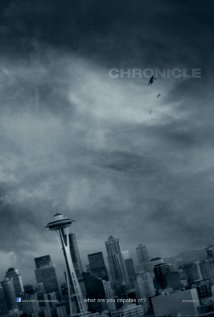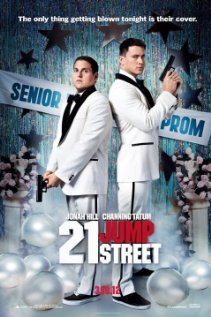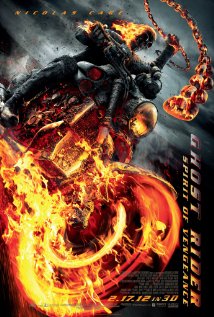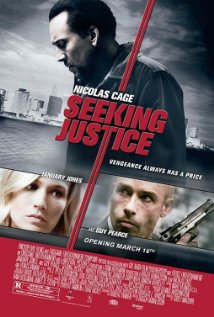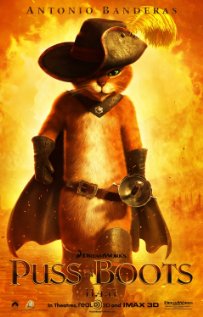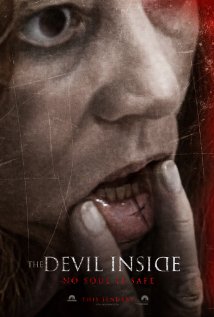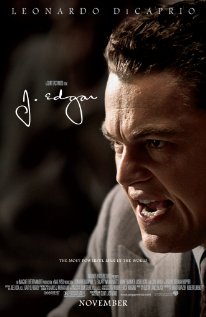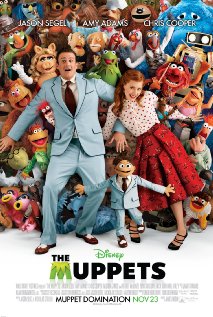It’s the 92nd reel of COL Movies, Join us as we take a realllllllly looooooooooonnnnggg look at the longest movie to ever win a best picture oscar 1939’s movie that put the explatives in epic “Gone With The Wind” Next up on the block we take a look at yet another “Found Footage” film “Chronicle” Are we happy that we found it? Lastly we take a Jump on over to Jump street.. that’s right its another remake and this time they are resurrecting the late 80’s hit TV show of the same name? Will we be Jumping into the theaters to see it? Or Jumping off a cliff? All this plus some movie sequel news and some sneak peaks at some upcoming movie villans. All that and more on this Reel of COL Movies: Oh Fiddle-de-de
[display_podcast]
News:
- They are already writing a John Carter Sequel
- More Transformers coming our way! June 27, 2014
- Curious what The Lizard is gonna look like?
The Past: Gone With The Wind (1939)
Rotten Tomatoes: 95% Fresh, 91% Audience
[asa]B002M2Z3BA[/asa]
Director: Geoge Cukor, Sam Wood
Starring: Clark Gable, Vivian Leigh, Olivia de Havilland, Leslie Howard
Trivia:
- When Gary Cooper turned down the role for Rhett Butler, he was passionately against it. He is quoted saying both, “Gone with the Wind is going to be the biggest flop in Hollywood history,” and, “I’m just glad it’ll be Clark Gable who’s falling on his face and not Gary Cooper.”
- In 2007, the American Film Institute ranked this as the #6 Greatest Movie of All Time.
- June 2008 Ranked #4 on the American Film Institute’s list of the 10 greatest films in the genre “Epic”.
- The movie’s line “Frankly, my dear, I don’t give a damn.” was voted as the #1 movie quote by the American Film Institute (out of 100).
- First color film to win the Best Picture Oscar.
- Of all the many actresses who tested for the part of Scarlett, only Paulette Goddard and Vivien Leigh were filmed in color.
- Although he was dismissed from the production, George Cukor continued to privately coach both Vivien Leigh and Olivia de Havilland at their request on weekends.
- The estimated production costs were $3.9 million. At the time, only Ben-Hur: A Tale of the Christ and Hell’s Angels had cost more.
- Sidney Howard agreed to write the screenplay, but from his home in Massachusetts, 3000 miles away from studio interference. His first draft would have made a 5 1/2 hour movie. Howard reluctantly agreed to leave his Massachusetts farm and come to Hollywood to work on another draft with Selznick and then-attached director George Cukor. As Selznick was preoccupied with problems on the set of The Prisoner of Zenda, Howard had to wait 5 weeks before he was able to start working on another draft (in the meantime contributing some rewrites for “Zenda”). The second draft turned out to be 15 pages longer than the first.
- David O. Selznick traveled to Bermuda in September 1938 to finalize the script. He reportedly brought four suitcases full of drafts with him.
- The Ku Klux Klan was written out of the screenplay as the organization to which Frank Kennedy turns after Scarlett is attacked in Shantytown. Producer David O. Selznick said that he had no desire to remake The Birth of a Nation, telling screenwriter Sidney Howard in 1937, “I do hope you will agree with me on this omission of what might come out as an unintentional advertisement for intolerant societies in these fascist-ridden times. . . .”
- Half a million feet of film were shot. This was all edited down to 20,000 feet.
- There are more than 50 speaking roles and 2,400 extras in the film.
- Contrary to popular belief, this is not the first film to use the word “damn”. The expletive was used in numerous silent intertitles and in several talkies, including Cavalcade and Pygmalion.
- For the premiere in Atlanta in December 15, 1939, the governor declared a state holiday. Ticket prices for the premiere were 40 times the usual going rate.
- One of the few remaining scenes directed by George Cukor to survive into the final cut of the film is the birth of Melanie’s baby.
- At one point, five film units were shooting scenes. Directors involved were Sam Wood, Sidney Franklin and stunt coordinator Yakima Canutt.
- David O. Selznick bought the rights to the best selling novel for $50,000.
- In 1939, the Hollywood Production Code dictated what could and could not be shown or said on screen, and Rhett Butler’s memorable last line presented a serious problem. A few of the suggested alternatives were
- “Frankly my dear… I just don’t care,” “…
- it makes my gorge rise,” “…
- my indifference is boundless,” “…
- I don’t give a hoot,”
- nothing could interest me less.”
- Although legend persists that the Hays Office fined Selznick $5,000 for using the word “damn”, in fact the Motion Picture Association board passed an amendment to the Production Code on November 1, 1939, to insure that Selznick would be in compliance with the code. Henceforth, the words “hell” and “damn” would be banned except when their use “shall be essential and required for portrayal, in proper historical context, of any scene or dialogue based upon historical fact or folklore … or a quotation from a literary work, provided that no such use shall be permitted which is intrinsically objectionable or offends good taste.” With that amendment, the Production Code Administration had no further objection to Rhett’s closing line, “Frankly, my dear, I don’t give a damn.”
- 1,400 actresses were interviewed for the part of Scarlett O’Hara. 400 were asked to do readings.
- The premiere was held in Atlanta, Georgia on December 15, 1939. It was reportedly the first time that David O. Selznick had been in the South.
- The 222 minute running time excludes the Overture Music (played before the credits), the Entr’acte Music (played during the intermission) and the Exit Music (played after the film ends). All three were especially recorded for the film soundtrack, and were heard at the film’s original 1939 world premiere. They were seldom played by exhibitors until the 1997 New Line Cinema edition of the film restored them. They are also included on the DVD.
- For the scene in which Scarlett escapes the burning of the Atlanta Depot, a horse was needed to play woebegone, an old nag on the verge of collapse. A suitable candidate was finally found, but weeks later, when the horse was brought to the set, it had gained weight and its ribs were no longer visible. There was no time to find a replacement, so the makeup department painted dark shadows on its ribs to give the appearance of malnourishment.
- In the scene where Scarlett searches for Dr. Meade, making her way among 1,600 suffering and dying Confederate soldiers, to cut costs and still comply with a union rule that dictated the use of a certain percentage of extras in the cast, 800 dummies were scattered among 800 extras.
- In the scene where Rhett pours Mammy a drink after the birth of Bonnie, for a joke during a take, Clark Gable actually poured alcohol instead of the usual tea into the decanter without Hattie McDaniel knowing it until she took a swig.
- The first rough cut in July 1939 ran four and a half hours – 48 minutes longer than the final release.
- All seven of Hollywood’s then-existing Technicolor cameras were used to film the Burning of the Atlanta Depot. Flames 500 feet high leaped from a set that covered 40 acres. Ten pieces of fire equipment from the Los Angeles Fire Department, 50 studio firemen and 200 studio helpers stood by throughout the filming of this sequence in case the fire should get out of hand. Three 5,000-gallon water tanks were used to quench the flames after shooting.
- Vivien Leigh worked for 125 days and received about $25,000. Clark Gable worked for 71 days and received over $120,000.
- Clark Gable was so distressed over the requirement that he cry on film (during the scene where Melanie is comforting Rhett after Scarlett’s miscarriage) that he almost quit. Olivia de Havilland convinced him to stay.
- The horse that Thomas Mitchell rode was later Silver of The Lone Ranger fame.
- Hattie McDaniel became the first African-American to be nominated for, and win, an Academy Award.
- Rhett was not allowed to say, on film, “Maybe you’ll have a miscarriage” right before Scarlett falls down the stairs; the line is changed to “Maybe you’ll have an accident.”
- If box office receipts for the movie were adjusted for inflation, it would be the top grossing movie of all time; Star Wars: Episode IV – A New Hope would only be the second most successful movie of all time. According to the Guinness World Records homepage the total gross in 2005 figures would be $3,785,107,801.
- None of the interior sets had ceilings.
- At nearly four hours long, this is longest running of all movies to win the Best Picture Academy Award.
- Was voted the eighth greatest film of all time by Entertainment Weekly.
- In 2004, the movie was completely restored from the original three Technicolor negatives. This time, digital technology was employed to create results impossible to achieve with traditional methods. The negatives were scanned in at 2K resolution and digitally combined to remove all previous alignment problems and achieve perfect registration despite different amounts of shrinkage in the masters. The resulting digital master is of higher quality than any prints available so far – including the original prints from 1939. The 2009 Blu Ray Release comes from a new improved version 8K resolution scan and that is maximum possible limit for 70mm format.
- The character of Rhett Butler was partially inspired by Mitchell’s husband nicknamed “Red”
- Hattie McDaniel was cast as Mammy after Louise Beavers, Etta McDaniel, Ruby Dandridge, and Hattie Noel were briefly considered.
- During filming Vivien Leigh reportedly smoked four packets of cigarettes a day. Clark Gable smoked three packs a day throughout his career.
- According to Newsreels, there were a handful of Confederate Civil War veterans who, though quite old, attended the premiere in Atlanta.
- The scene where Scarlett makes a dress out of a curtain later was later spoofed on The Carol Burnett Show
- Neither Clark Gable or Leslie Howard wanted to be in the film. Howard didn’t even bother to read the original novel.
Talking Points:
- Ok.. it was pretty damn long! Do you think that a movie of this size will ever see the light of day in modern Hollywood?
- Peoples reaction to hearing about us doing this movie.
- The shear scope of the film.. the epic shots
- anyone else need a decoder ring?
What We’ve Learned:
- Only the foreman gets to say when it’s quittin time
- It doesn’t matter who you marry as long as he’s southern and thinks like you
- A lady eats like a bird, not a hog or a field hand
- Don’t take a girl on a buggy ride without a chaperon unless you intend to marry her
- Mourning really cramps your social life
- With enough courage you can live without a reputation
- Tomorrow is another day.
Trailer:
Recommendations:
Jeff: Huh? What? *yawn* A Movie played? Hmm, maybe I should try watching it again.
Ray: Ok, I can finally cross this one off my list. I’m a little perplexed. Overall I loved this movie, but it was about 60 minutes too long. The first half of this movie was great and really kept me interested and entertained, the second half was a little slow, but overall an enjoyable experience.
Steve: Way too long for me, but definitely memorable performances. I often don’t mind seeing these types of films because there is so much pop culture and things that other films are based on…it’s neat to see where they came from.
The Present: Chronicle
Rotten Tomatoes: 85% Fresh; 78% Audience
Director: Josh Trank
Starring: Dane DeHaan, Alex Russel, Michael B. Jordan
Trivia:
- The pink haired girl played by Anna Wood whom Andrew was making out with is actually the real life girlfriend of Dane DeHaan (Andrew)
- Chronicle was co-written by Fear Itself writer Max Landis and The Kill Point veteran Josh Trank. Trank also directed the feature.
- Film was promoted by “Flying People” – RC airplanes doctored up to look like people – around New York City
Talking Points:
- The Found footage phenomenon… although not really “Found” in this movie.
- Setting up for a sequel
- Music
What We Learned:
- Bringing a camera to school with you will not improve your social status
- There’s no bikinis in Tibet
- Being good at beer pong will get you laid
- The Lion does not feel guilty about eating a gazelle
Trailer:
Recommendations :
Jeff: This was much better then I thought it would be. However, it was still just okay. Worth a look see but probably as a rental.
Ray:. So.. a found or gathered footage movie. I know I said I was over them when I watched Devil Inside, but I actually found the story and execution of this movie good enough and entertaining enough to forgive its flaws. I’m surprised the audience score is not higher on this one. It’s getting excellent word of mouth!
Steve: This one didn’t do it for me. I liked the premise, especially the “what would you do if you had these powers” and “good vs evil” stuff, but it didn’t all come together for me because of the format.
The Future: 21 Jump Street
Release: March 22, 2012
Director: Phil Lord, Chris Miller
Starring: Jonah Hill, Channing Tatum, Ice Cube
Summary:
A pair of underachieving cops are sent back to a local high school to blend in and bring down a synthetic drug ring.
Trivia:
- Jennifer Lawrence, Juno Temple, Julianne Hough and Gemma Ward auditioned for a role.
- Jonah Hill wrote a cameo role specifically for Johnny Depp.
- Emma Stone was considered for the lead female role but had to drop out due to scheduling conflicts with her other movie, The Amazing Spider-Man.
- In May 2008, Columbia Pictures confirmed that a film version of the series was under development.
- Jonah Hill rewrote an existing script by screenwriter Joe Gazzam and executive produce the film, as well as star in the film.
- In May 2009, Jonah Hill described the film adaptation as being a “R-rated, insane, Bad Boys-meets-John Hughes-type movie”.
Talking Points
- TV to Film Adaptation
- Nostalgic enough to get you to the theater?
- Who do you think they’re trying to get to see this?
Trailer:
Excitement:
Jeff: Kill me.
Ray: I was never a fan of the TV show (never seen it) so I was just curious as to how everyone felt about it. I guess there are parts of it that look entertaining, but you can never really trust a trailer.
Steve: Loved the TV show because it was a drama…but not liking the fact they are turning it into a slapstick comedy. 21 Jump Street became a reason I wanted to pursue law enforcement back in the day…but this would not motivate me. I’m kinda mad I saw Holly Robinson-Peete in the trailer – only because it’s not the same, but I’m glad they’re doing at least some cameos to bring it back to the original.
Coming Attractions – “All Nicholas Cage Special!”
The Past:
[asa]B000OVLBEO[/asa]
The Present:
The Future:
Podcast: Play in new window | Download

